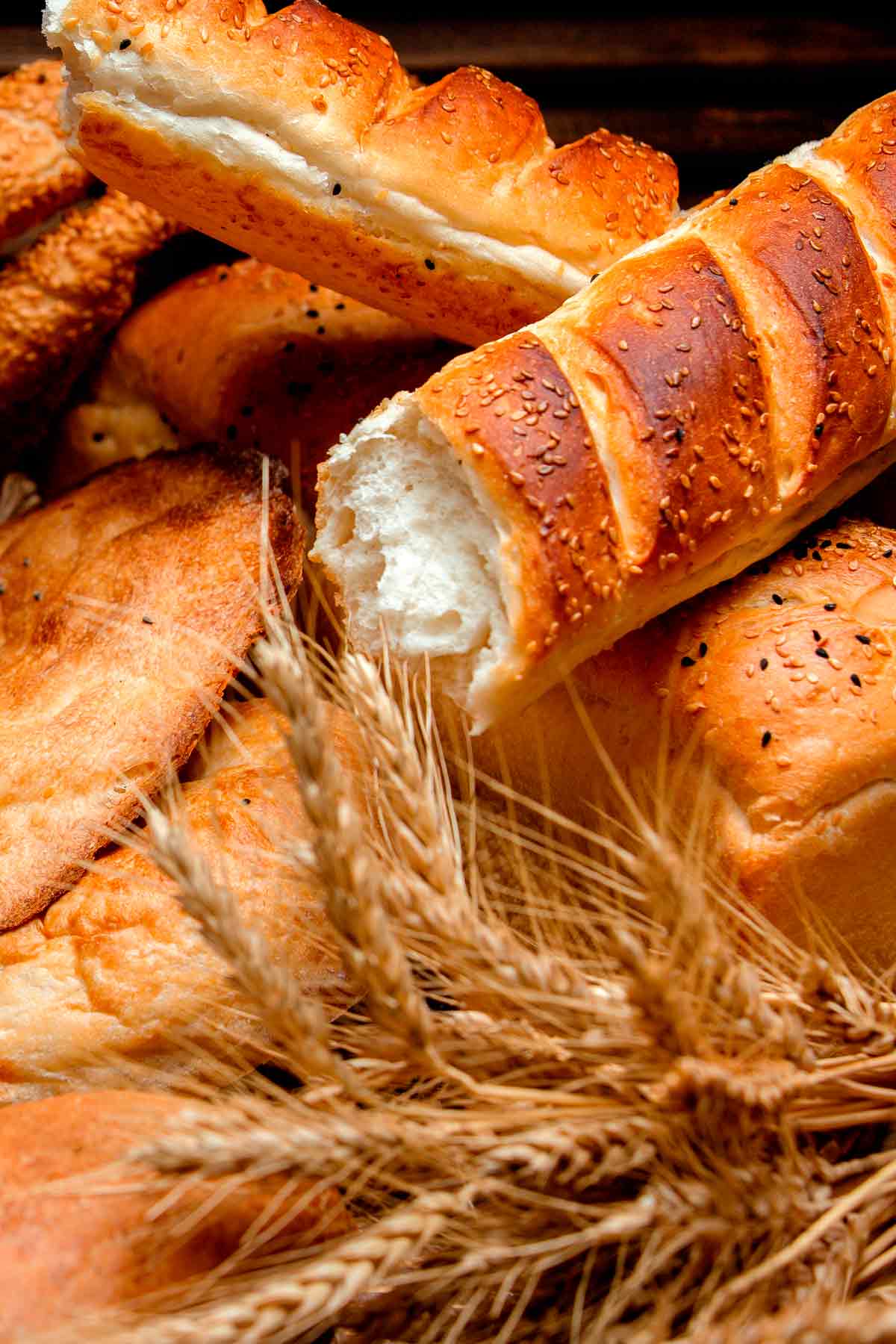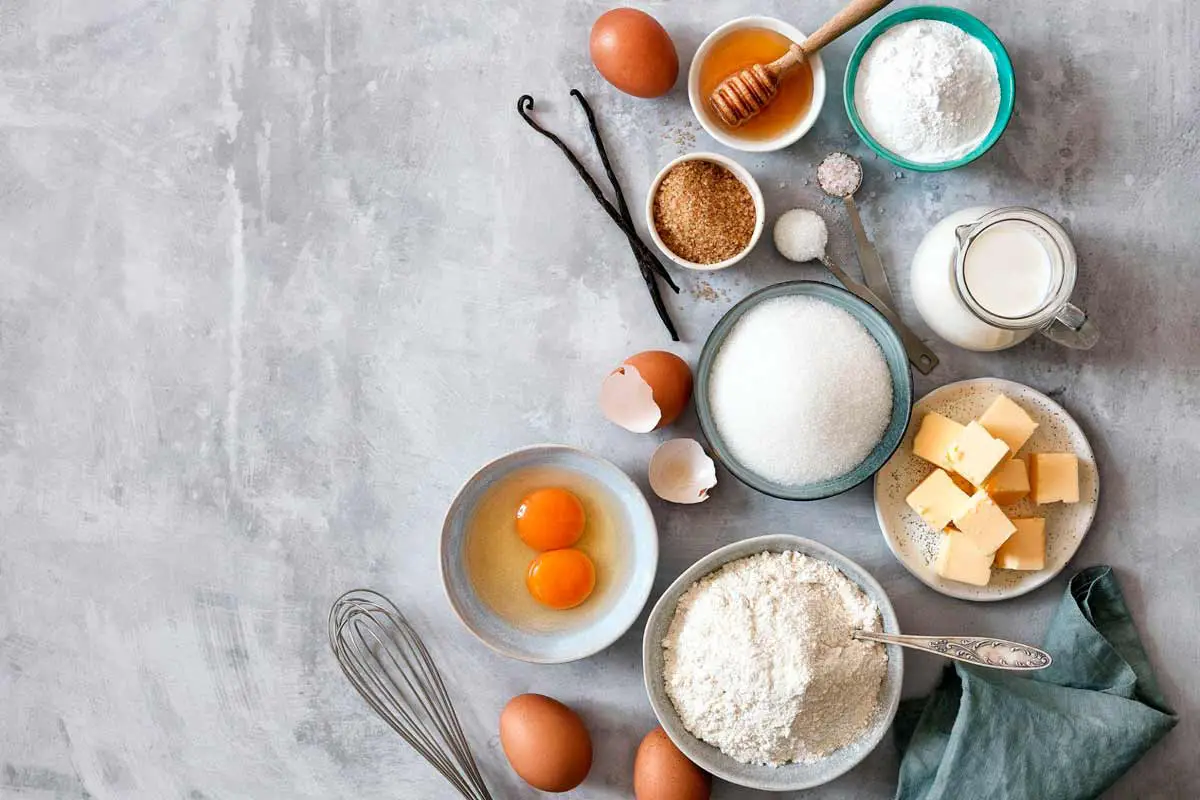Bread expiration date – I am sure this phrase confuses many people. The main reason is that this baked good still looks and smells good even past its shelf life. It brings up the question – how long does bread actually last?
Bread, in general, can last for a week at room temperature. You can refrigerate certain types of bread, which extends its shelf life. Proper storage also affects how long your bread can last.

Bread Expiration Date
There is no denying that bread is one of the staples for almost every household. But if there is one thing that confuses many people about this baked good, it is their shelf life. While there is always a best-by date (or expiration date) indication on bread packages, the bread usually is safe to eat longer than the date stated.
According to the USDA, the best-by date indicates when the bread will have the best flavor or quality.
So passing the best-by date, does not necessarily mean you have to throughout your bread.
In this article, we will be discussing the best-by date and some things you can do to extend your bread´s lifespan.
Bread Types And Their Shelf Lives
Flour, water, and yeast are the main components of a typical bread. Bakers experiment with these ingredients by reducing or increasing the amounts when baking. As bakers change their dough mixture, they also create different types of bread. And these changes also contribute to the bread’s best-by date.
In addition, some bread makers, especially the ones who mass-produce bread products, add preservatives to their recipes to lengthen shelf life.
The most common bread preservatives are:
- potassium sorbate
- sodium benzoate
- lactic acid bacteria
Moreover, the best-by date of bread varies depending on its type and ingredients used.
| Type of bread | Best-by date (at room temperature) |
|---|---|
| Homemade bread | 3 to 4 days |
| Store-bought bread | 5 to 7 days |
| Dough for bread rolls | 1 day |
| Gluten-free bread | 2 to 3 days |
| Dried Bread Products (Croutons, Bread Crumbs, etc.) | 5 to 6 months |
Homemade bread does not contain preservatives. For this reason, it has a short lifespan compared to bread bought at bakeries and grocery stores. On the other hand, gluten-free bread and dough have more moisture than regular bread, which also shortens its lifespan.
Finally, croutons, toasts, bread crumbs, and other dried bread products have the least amount of moisture, allowing them to last in the pantry for months without getting moldy. (source)
Factors That Affect The Shelf Life Of Bread
A bread’s best-by date is pretty short, regardless of whether they are store-bought or homemade. The main reason for this short lifespan is the ingredients used for making the bread. Apart from flour, yeast, and water, some bread contains additional ingredients like eggs, milk, and oil. These additional bread ingredients spoil quickly, thus acting as the internal factors that affect how long the bread can last.
External factors, such as temperature and moisture, can affect how long you can consume your bread. By knowing what these factors are, you can extend the shelf life of your bread and enjoy it for a longer period.
External Factors That Affect Bread Best-By Date
Packaging
Bread packaging prevents it from coming in contact with moisture, air, and other external factors that may affect it. Airtight packaging prevents baked goods from going bad fast and allows them to stay fresh for a good period.
Allowing air and moisture to come in contact with your bread will cause it to develop mold. So, it is essential to use airtight packaging for bread, whether you bought it from a bakery or made it home.
Moisture
Molds grow in warm and moist environments. Storing your bread in places with high humidity can cause it to spoil quicker than its actual shelf life.
So, to prevent mold from contamination your bread, again, it is essential to store it in airtight packaging.
Temperature
Bacteria grow in many environments. Some bacteria proliferate in warm conditions, while others can withstand cold conditions. However, bread is more likely to spoil when exposed to a warm environment. So refrigerating your bread allows it to last about 3 to 4 days past its shelf life. Suppose you do not want to refrigerate your bread. In that case, you need to store your bread at an ambient room temperature of around 68-70 degrees Fahrenheit (20-22°C).
Internal Factors That Affect Bread’s Shelf Life
Water Content
Typical bread contains at least 35 percent of water. The more water bread contains, the more it can harbor molds and bacteria. It is why hydration loaves and gluten-free bread have a short shelf life.
Ingredients

Milk, egg, and yeast have a fast spoilage rate, so bread that contains these raw materials have a shorter shelf life. Meanwhile, margarine and salt limit the growth of mold and microorganisms, so they serve as natural bread preservatives.
Preservatives
It is common for bakeries to use preservatives to increase the bread’s best-by date. Preservatives like calcium propionate and potassium sorbate inhibit mold growth, so store-bought bread stays fresh longer than homemade ones.
Additionally, adding certain acids to bread can increase its shelf life because the acid acts as a preservative that helps prevent bread contamination. (source)
How To Extend The Shelf Life Of Bread
While bread has a short shelf life, there are some steps that you can do to keep it fresh even after days past its shelf life.
Freeze your bread
One excellent way to keep bread fresh is to freeze it. By freezing your bread, you can minimize its air and moisture exposure, which lengthens its lifespan. Even better, freezing bread does not negatively affect its taste, so you can still enjoy its goodness after toasting it.
Use an emulsifier
Adding an emulsifier to bread strengthens dough and aeration, thus extending its shelf life. Some of the most common emulsifiers are pectin and lecithin. One to two tablespoons of pectin is enough to improve bread’s shelf life. Meanwhile, lecithin is common in soy and sunflower oil, so you can experiment with your bread by adding these ingredients.
Incorporate honey
Honey serves as a natural preservative in bread. It also allows you to reduce the sugar you use when baking, making it an excellent addition to your baked goods. Honey is also acidic, so substituting 20 percent sugar with this sweetener can improve the bread’s expiration date. (source)
Final Thoughts
Bread is a staple food with a relatively short lifespan. Generally, homemade bread can only last for 3 to 4 days, while bakery products have a shelf life of 5 to 7 days – if stored correctly!
Some factors affect its shelf life, which includes water and preservative content and storage methods. For instance, if you want your bread to last longer, adding honey as a natural preservative and vacuum sealing it will do the trick.
Did this article help you find out the mystery about the bread’s best-by date? If you have questions or suggestions, feel free to drop them in the comments section so we can answer them!

Leave a Reply